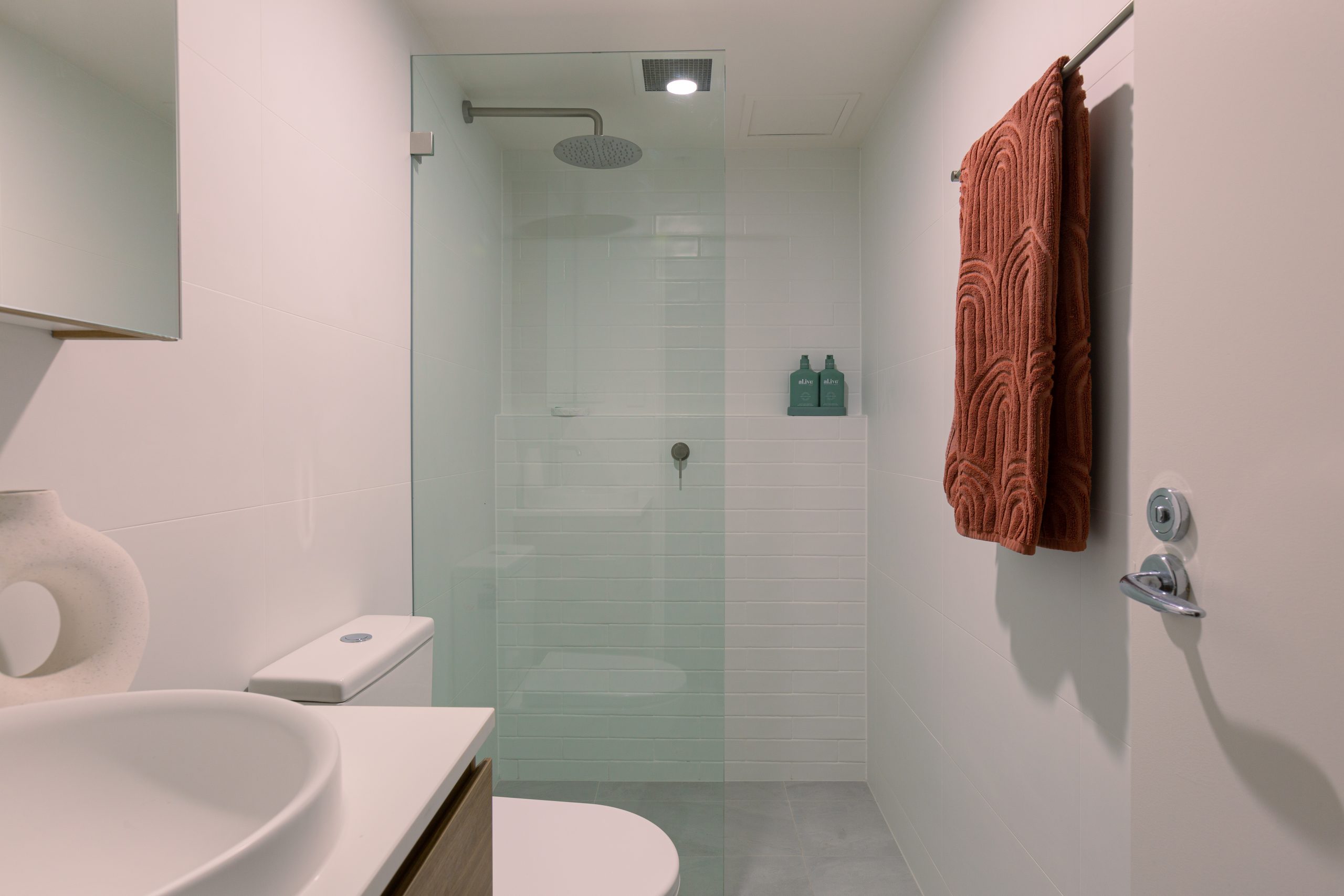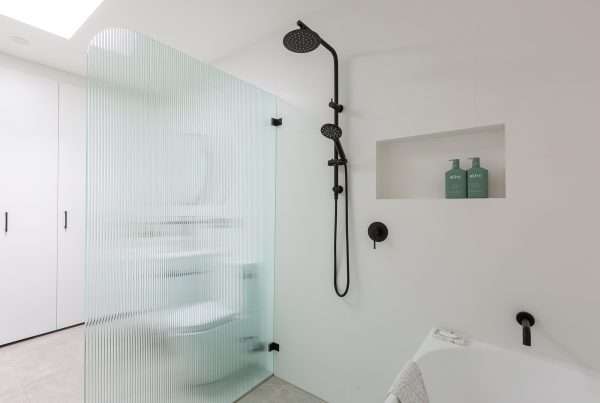Introduction to Bathroom Remodelling With Outdated Plumbing
Beginning a bathroom remodel with outdated plumbing involves navigating several challenges, but it also opens up opportunities for significant improvements. This section will delve into the key aspects of assessing and planning renovations in older bathrooms, particularly where existing plumbing may not align with current standards or efficiencies.
Identifying Common Plumbing Issues in Older Bathrooms
Identifying common plumbing issues is a crucial step in planning a successful bathroom remodel, especially in older homes where plumbing may not have been updated for decades. Here are some of the typical problems you might encounter:
- Corrosion and Decay: Older pipes, particularly those made from metals like galvanised steel, can corrode over time. This corrosion can lead to leaks, reduced water pressure, and eventually the need for complete pipe replacement.
- Inefficient Fixtures: Many older bathrooms feature fixtures that are not water-efficient. These can include toilets, tapware, and showerheads that use significantly more water than modern standards permit.
- Poor Layout and Design: Historic plumbing may not be optimally designed for modern usage. This can affect everything from the flow of water to the placement of fixtures, making it cumbersome to use or upgrade the bathroom without comprehensive changes.
- Outdated Materials: Besides metal pipes, you might find lead pipes or clay sewer lines, which pose health risks and are prone to breaking, respectively.
Addressing these issues not only enhances the functionality and safety of your bathroom but also contributes to its overall aesthetic and value.
The Importance of a Professional Inspection Before Starting
At Fresher Bathrooms, we prioritise thoroughness and precision in every project we undertake. Here’s why securing a professional inspection before starting your bathroom remodel is paramount:
Uncovering Hidden Issues: Our licensed plumbers conduct comprehensive inspections to uncover hidden problems such as internal pipe corrosion, water pressure issues, and concealed leaks. Addressing these issues early prevents costly surprises during the remodel.
Ensuring Compliance: Compliance with Australian standards is non-negotiable for us. Our experts ensure that all existing plumbing meets current regulations, safeguarding your safety and legal compliance, whether for your peace of mind or future property sales.
Strategic Planning: Insights from our professional inspection inform strategic planning for your remodel. Knowing precisely what needs fixing, replacing, or upgrading enables us to create a tailored plan, avoiding costly mid-project changes and delays.
Long-Term Savings: While there are upfront costs associated with an inspection, it’s a wise investment. By identifying and addressing potential issues early on, you’ll save significantly on emergency repairs and avoid inefficient energy or water usage, resulting in long-term savings.
Trust Fresher Bathrooms to conduct a thorough professional evaluation before your remodel. Our meticulous approach ensures that your bathroom not only looks beautiful but functions optimally, enhancing both its functionality and value.
Planning Your Remodel Around Existing Plumbing
When remodelling a bathroom, working around existing plumbing can save both time and money, especially if the current system is fundamentally sound but just needs updating or reconfiguring. Here are some strategies to effectively plan your remodel with the existing plumbing in mind:
How to Design for Efficiency and Accessibility
Designing for efficiency involves optimising the use of water and energy, while accessibility focuses on making the bathroom usable by people of all abilities. Consider the following:
- Optimise Layout: Avoid moving major plumbing fixtures like toilets and showers if possible, as relocating these can be costly and complex. Instead, focus on improving the layout around these fixtures to enhance usability and aesthetics.
- Water-Efficient Fixtures: Choose taps, showers, and toilets that meet Water Efficiency Labelling and Standards (WELS) to reduce water usage without sacrificing performance.
- Accessibility Considerations: Incorporate features such as wider doorways, grab bars, and walk-in showers that accommodate everyone, including those with mobility issues.
Choosing Materials Compatible with Old Plumbing
Selecting the right materials is crucial when integrating new designs with old plumbing:
- Compatibility: Ensure that new fixtures are compatible with existing pipe materials to prevent leaks or damage. For example, some modern fittings may not work well with older copper or steel pipes without proper adapters.
- Durability: Opt for materials that are known for longevity and resistance to moisture and wear, which is particularly important in a high-humidity area like a bathroom.
- Aesthetic Harmony: Choose materials that blend the old with the new for a cohesive look. This might involve matching new tiles or fixtures with the vintage style of your home or opting for timeless designs that complement any era.
Planning your remodel with these considerations in mind will help maintain the integrity of the original plumbing while updating the space to meet modern needs and tastes.
Essential Steps in Updating Damaged Plumbing
Addressing damaged plumbing is a critical component of any bathroom remodel, especially in older homes where the systems may not have been maintained effectively. Here are the essential steps to take when updating damaged plumbing to ensure a successful renovation:
Replacing Pipes: When and Why It’s Necessary
Replacing old or damaged pipes is often necessary to prevent leaks, improve water quality, and enhance the overall plumbing system’s efficiency. Here’s why and when it might be necessary:
- Age of Plumbing: If your home’s plumbing is several decades old, it might be time for a replacement to avoid frequent repairs down the line.
- Material Degradation: Materials like galvanised steel or iron can corrode over time, leading to reduced water flow and potential health hazards from rusted pipes.
- Upgrading for Efficiency: Modern materials like PEX or copper are more efficient and durable. Replacing old pipes with these materials can significantly improve water pressure and temperature control.
The Latest Pipe Materials and Installation Techniques
Utilising the latest materials and installation techniques can greatly enhance the longevity and functionality of your bathroom’s plumbing:
- PEX Tubing: Flexible, durable, and resistant to scale and chlorine, PEX is often used in new builds and remodels for its ease of installation and reliable performance.
- Push-fit Fittings: These allow for quicker, easier installations, which is ideal for tight spaces commonly found in bathroom remodels. They also reduce the risk of leaks.
- Eco-friendly Solutions: Consider environmentally friendly options like reclaimed water systems for toilets or low-impact installation techniques that minimise disruption to your home.
Updating your bathroom’s plumbing using these materials and methods can ensure that it is both modern and capable of meeting the demands of contemporary bathroom fixtures.
Budgeting for Plumbing Upgrades in Your Remodel
Effective budgeting is essential when planning plumbing upgrades during a bathroom remodel. Understanding the potential costs and planning accordingly can help you manage your finances without compromising on quality or functionality.
How to Estimate Costs and Save Money
Here are some tips on how to accurately estimate costs and find savings during your bathroom plumbing upgrade:
- Get Multiple Quotes: Always seek quotes from several plumbing contractors to compare prices and service offerings. This will give you a better sense of what the market rates are and help you find the best value.
- Prioritise Needs Over Wants: Focus on essential upgrades that need immediate attention due to functionality or condition issues. Luxuries can be scaled back or postponed if necessary to stay within budget.
- Consider Long-term Savings: Investing in high-quality, water-efficient fixtures might have a higher upfront cost but can lead to significant savings in water bills and future maintenance.
- DIY Where Possible: Simple tasks like replacing taps, installing showerheads, or painting can be done yourself, saving on labour costs. However, ensure you have the skills needed to complete these tasks effectively to avoid costly mistakes.
- Reuse Materials: If some existing materials or fixtures are in good condition, consider reusing them. For example, original tiles can be kept or refinished rather than replaced, maintaining character while saving money.
FAQs About Bathroom Plumbing Remodels
Navigating a bathroom remodel involves addressing numerous questions about plumbing, especially when dealing with older or damaged systems. Here, we address some of the most common FAQs to help you better understand and manage your bathroom plumbing remodel.
How do I know if my bathroom plumbing needs to be completely replaced?
Signs that you might need a complete replacement include persistent leaks, poor water pressure, water discolouration, and frequent clogs. If your plumbing system is several decades old, it’s also worth considering an upgrade to comply with current standards and improve efficiency.
What should I do if I find mould during my bathroom remodel?
If you discover mould, it’s important to address it immediately to prevent health risks and further spread. Clean small areas with a mould-killing solution. For larger infestations, or if the mould is inside the walls, it’s advisable to hire a professional mould remediation service.
Can I keep any of my old plumbing fixtures when remodelling?
You can keep old fixtures if they are still in good working condition and fit the design of your new bathroom. However, consider updating fixtures that are inefficient or significantly worn to enhance the functionality and aesthetics of your space.
What are the best materials for new bathroom plumbing?
The best materials for new plumbing depend on your budget and preferences. However, PEX piping is popular due to its durability, flexibility, and resistance to scale and chlorine. For fixtures, chrome and stainless steel are excellent choices for their longevity and resistance to corrosion.
How can I ensure that my new bathroom will be water-efficient?
To ensure water efficiency, choose fixtures that are rated by the Water Efficiency Labelling and Standards (WELS) scheme. These include low-flow showerheads, taps, and dual-flush toilets. Also, consider implementing a rainwater system to reuse water from showers and sinks.
What is the typical cost range for a bathroom plumbing remodel?
The cost of a bathroom plumbing remodel can vary widely based on the extent of the work required. Minor updates might cost a few thousand dollars, while a comprehensive remodel involving new fixtures and piping can run into the tens of thousands. Always get multiple quotes to ensure you are getting a fair price.
Conclusion
Completing a bathroom remodel with outdated or damaged plumbing requires careful planning, a solid understanding of the existing conditions, and strategic decisions about upgrades and improvements. Addressing plumbing issues not only enhances the functionality and efficiency of your bathroom but also contributes to the overall comfort and value of your home.
- Invest in Quality: Choosing high-quality materials and professional installations ensures that your plumbing will last longer and perform better, saving you money and hassle in the long run.
- Focus on Sustainability: Incorporating water-efficient fixtures and eco-friendly materials can significantly reduce your water usage and impact on the environment, aligning your bathroom with modern sustainability standards.
- Seek Professional Advice: Consulting with professional plumbers or designers can provide you with insights and options you might not have considered, helping you achieve a more successful remodel.







